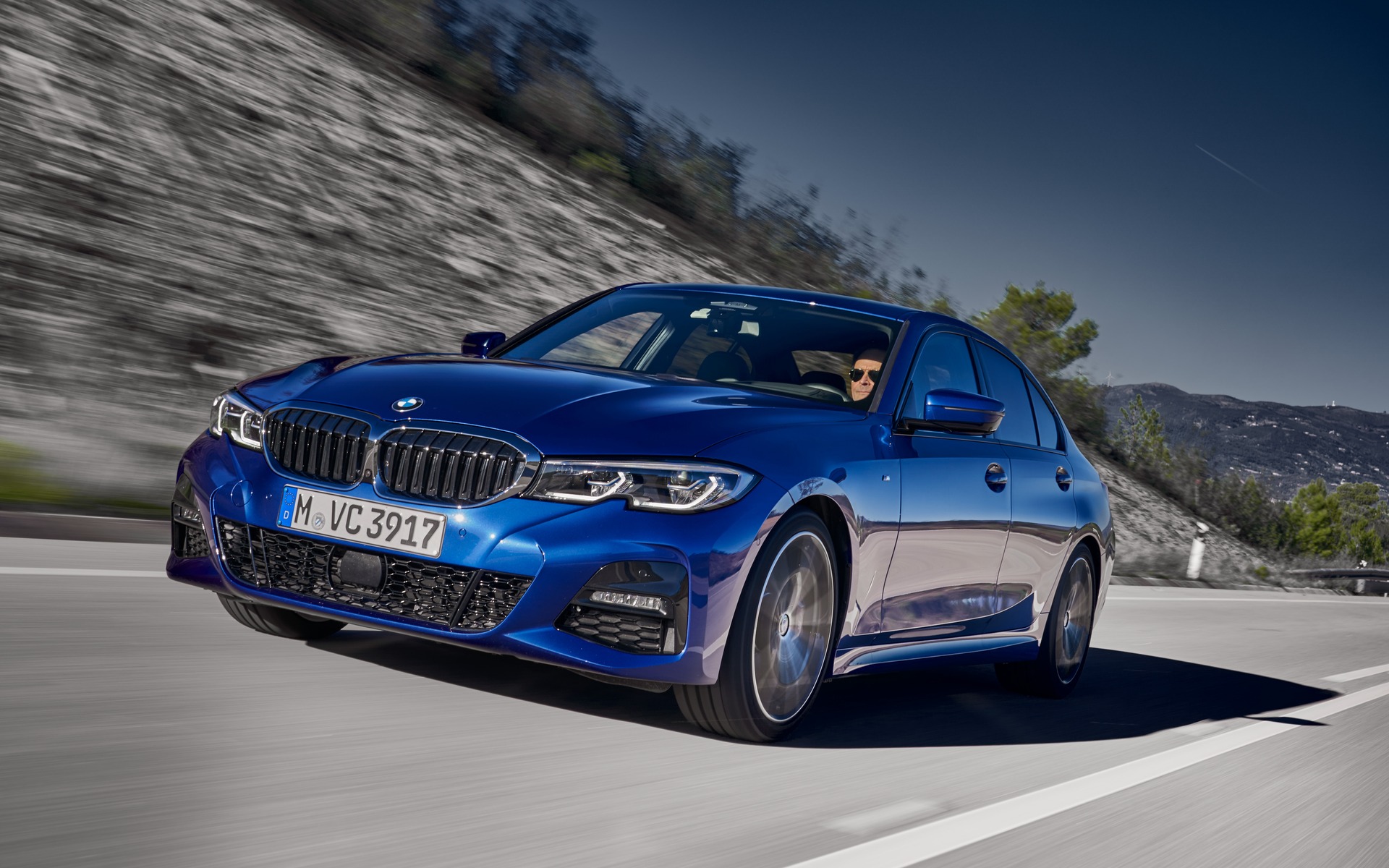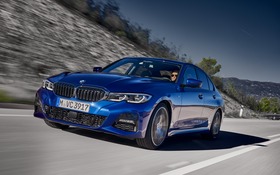2019 BMW 3 Series: Subtly Better

| Strong points |
|
|---|---|
| Weak points |
|
PORTIMÃO, Portugal – BMW hit the bullseye when it first launched the 3 Series in 1975. This lively and agile compact luxury sedan created a new category and went on to dominate it. So much so that the Bavarian manufacturer has produced more than 15.5 million units of the 3 Series (in all its forms) over the past 43 years. This makes it the most popular BMW car of all time.
No wonder the automaker puts a lot of energy–and money–into updating the 3 Series from time to time. They proudly presented the seventh-gen 3 Series at the Paris Motor Show and not long after unveiled the resolutely sporty M340i and M340i xDrive at the Los Angeles Auto Show.

The Price of Success
The problem with creating a highly successful vehicle is that you have to keep pushing it further so that it stays at the top, while making sure you don’t ruin a good thing. Especially in a category as fiercely competitive as the luxury sports compact segment. This is no easy task.
The new 3 Series is instantly recognizable, which was certainly the effect stylists were looking for. Built on a version of the modular CLAR platform now found in all BMW rear-wheel- or four-wheel-drive series (and even the new Toyota Supra), it is nevertheless bulkier than its predecessor.
It is 7.6 cm longer overall, with the wheelbase gaining 2.85 cm in length and the front and rear tracks being widened 4.3 cm and 2.1 cm, respectively. But rest assured that it carries the gain well, thanks to more sculpted sides, nicely curved rear wings and a grille dominated by a larger and more prominent nose. The new curves are more attractive on the M Sport versions, which also boast large front air intakes and a more chiseled rear bumper.
The bodywork is one millimetre higher on the 2019 330i xDrive coming next spring and the M340i and M340i xDrive 2020 coming in summer. The body is 25% to 50% stiffer, depending on the section, and the new 3 is 55 kg lighter thanks to more ubiquitous use of aluminium. As a result, comfort, handling and performance have all improved, and there’s also more space with the trunk growing from 447 to 481 litres. To make things even better, there’s also a 40/20/40-split folding rear seatback.

Digital Shift
The changes are even more radical inside the cabin. To start, a full digital display was added with a 31.2-cm central touchscreen and another 26-cm screen to replace the 3 Series’ large white-on-black analog dials. We’ll miss those! I’m not too sure about the new rev counter, whose needle sweeps across the virtual gauge from right to left. The dashboard design is sleek and meticulously finished, but the speckled metal-type mouldings in the M Sport versions are a little plain. At least for my taste. Other finishes are available.
The air conditioning controls work well, despite their tiny buttons. The iDrive 7.0 interface’s large knob and buttons are easy to use, which is a good thing because the learning curve is pretty steep for the various menus, controls and settings. The new 3 Series is packed with apps, connections and interfaces, including 20 GB of memory, Apple CarPlay, a Wi-Fi hotspot and wireless charging. It also comes with more advanced, configurable and bilingual voice commands.
In addition, the nicely moulded leather steering wheel features easy-to-understand wheel-mounted controls, while the front seats offer a good combination of comfort and support. The rear seats on either side are OK, despite being a little short and deep (presumably to allow enough headroom).

Updated Engines
Both the 330i and M340i have seen their engines seriously revamped. They are now more compact, more powerful and “cleaner.” The 2.0-litre four-cylinder engine produces 255 horsepower and 295 lb.-ft. of torque, while the 3.0-litre inline-six engine generates 382 horsepower and 369 lb.-ft. of torque. Both come with lighter dual-chamber turbochargers and a whole slew of improvements.
These two engines, coupled with improved versions of the ZF eight-speed automatic transmission and xDrive all-wheel drive, promise to sprint from 0 to 100 km/h in 5.6 seconds in the 330i xDrive and 4.4 seconds in the M340i xDrive (provided you engage the launch control mode). Like the other two, the rear-wheel-drive M340i has an electronic rear locking differential with lateral torque transfer.
The suspension is now lighter thanks to more widespread aluminum, and all the fasteners were tightened, solidified and refined over hundreds of thousands of kilometres of testing—including laps on the Nürburgring track, of course. The group’s leader , engineer Albert “Mike” Maier, is particularly proud of the new “passive” damper that allows the vehicle to “float” on the road by neutralizing bumps, both large and small, with a second hydraulic piston.

Signature Finesse and Personality
The 330i we drove at the launch was wonderfully agile, stable and precise on the superb roads of Portugal’s Algarve region. With the optional M Sport suspension, which is 20% firmer and lowers the body by 10 mm, the vehicle neither rolls nor understeers. You certainly don’t feel like you’re driving a longer, wider sedan. Quite the opposite, actually. The four-cylinder engine is lively and flexible, though it falls short of being a beast, and the automatic transmission is delightfully fast and precise. My only reservation was the variable power steering. While precise, it’s too light for my liking.
The M340i xDrive, driven by Timo Glock, the BMW factory DTM pilot and former F1 driver who pushed an M2 Competition down the Portimão circuit, was spectacular. The M340i, however, held its own despite having 33 fewer ponies under the hood and an extra 100 kilograms to work against. But thanks to its outstanding balance, efficient all-wheel drive system and strong brakes, it’s like an M5 on a different scale. A new M3 with all-wheel drive is almost inevitable now.
The 2019 330i xDrive will be launched on March 9, 2019, with a starting price of $49,000. The 2020 M340i and M340i xDrive will follow in early summer, at $59,150 and $61,850, respectively. We’ll see what happens next.











